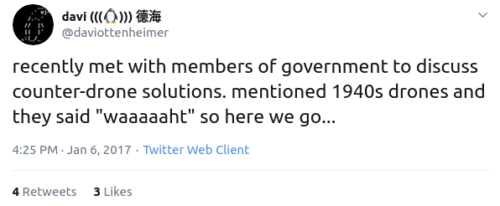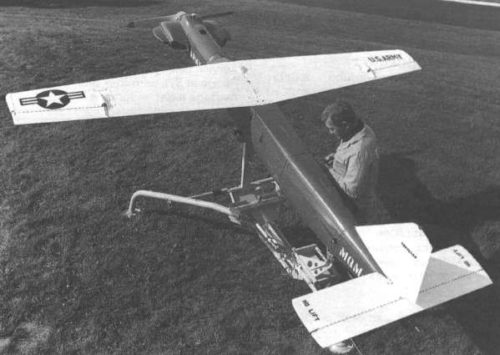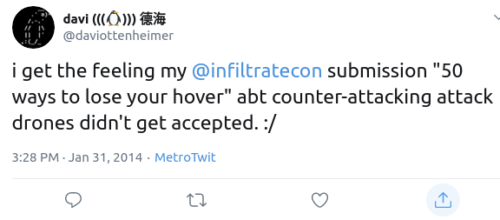I’ve been getting involved in a counter-drone market for many years now, including time spent in government offices with operators discussing the “latest” technology advances. Not everyone seems excited to hear about details in this area of security research.

One thing that regularly has come up is whether the venerable laser weapons are yet effective. I have to use the term venerable because the US Air Force itself will tell you they’ve been experimenting with lasers shooting down drones since the early 1970s (according to AFD-070404-025).
…1972 when technicians fired a ground based 100 kilowatt CO2 laser that propagated at 10.6 microns against a variety of stationary targets. The tests went so well the project elevated to firing the laser at a moving airborne target. On November 13, 1973, the laser was used against a 12 foot long Northrop MQM33B
radio controlled aerial target, a drone, in an attempt to knock it out of the air. Indeed, the drone did drop, but not precisely as planned.

In theory the laser tracks the target drone and then emits hot light to melt inexpensive plastic. Popular Mechanics has just posted a good example of this theory being turned into real-world application, called “This Is How a Laser Weapon Torches Drones Out of the Sky“.
Unfortunately the story was written around “a simple promotional video for Rafael’s Drone Dome, an anti-drone laser weapon”, making it a bit of PR extending the PR released by the manufacturer themselves.
Instead of taking the video at face value, better analysis is in order.
Here are a few thoughts on why perhaps it’s not such a bright idea (pun intended) for journalists to uncritically post a laser vendor’s demonstration.
1) Light reflection. Mirrors are a simple and logical countermeasure. As Dr. Seuss might put it, any chrome drone would bounce a drone dome. The dissipation of energy, to be fair, isn’t child’s play so the mirrors have problems to tackle. But an Office of Navy Research is definitely proving the point with their work on Counter Directed Energy Weapons. More to the point, the Air Force says the latest reflective anti-heat technology developed for energy efficient buildings (windows and roofs) is something that could be applied to all their weapons systems.
2) Dissipation of energy. In a famous case in Mexico, a liquid-cooled door greatly slowed police battering rams. The point here really is to push energy into heat sinks or disposable parts to slow absorption. Again, energy efficient buildings are developing things like phase change materials to absorb energy that easily could be applied to drones. Slowing the energy effectiveness on the drones could mean a moderately-sized swarm might easily overwhelm or avoid laser weapons.
3) Obfuscation. Both above technologies have very useful civilian applications, and thus are likely to improve faster than any expensive laser weapon can innovate. There’s also a more traditional countermeasure, which is to foul the environment a laser has to pass through. Drones could generate a synthetic cloud or fog. A swarm of drones could even create a blanket or corridor that renders laser weapons ineffective. NASA a couple years ago described a version of this working.
10 canisters about the size of a soft drink can will be deployed in the air, 6 to 12 miles away from the 670-pound main payload. The canisters will deploy between 4 and 5.5 minutes after launch forming blue-green and red artificial clouds.
Again slowing down the laser weapon is all that is needed. As one counter-counter-drone researcher put it to me “the glitter bomb is a zero cost defense”.
4) Counterattack. Lasers depend on being able to see, and be seen, so drones can fire lasers back at the source in order to blind the tracking systems or disrupt the light waves.
There are four devastating examples and more probably exist. In every one it’s economics, a matter of having inexpensive and rapidly iterating countermeasures that bypass the extremely expensive and slow-developing laser weapons.
Let me be clear, laser weapons are effective against operations that are not explicitly trying to build countermeasures to laser weapons. There is still a need for laser weapons. However, journalists do us no favors by promoting vendor PR and repeating nonsense like “100% effective”, given we have nearly 50 years of evidence how and why laser weapons fail.
